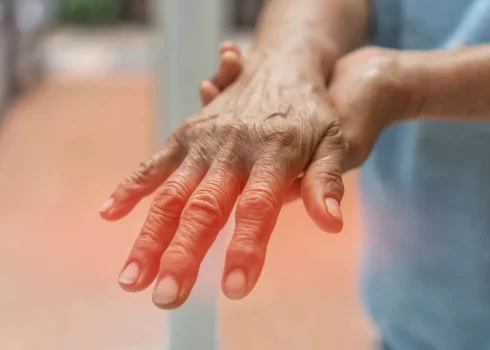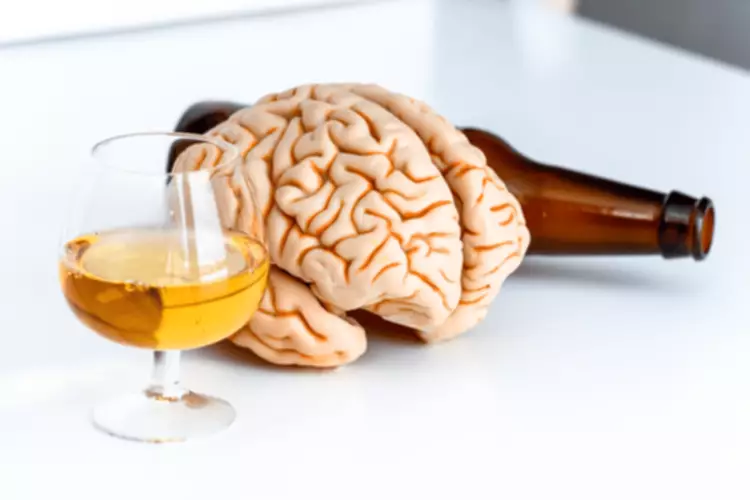Cognitive Behavioral Interventions for Alcohol and Drug Use Disorders: Through the Stage Model and Back Again PMC

Mechanisms of behavior change (MOBC) are person-level processes that exert a causal influence on a specific behavior change outcome. For CBT for AOD, the MOBC of interest are the specific indicators that are, based in theory, expected to transmit the effects of the intervention on its targeted outcomes. These include cognitive shifts in self-efficacy related to various risk scenarios (eg, negative affective states, positive affective states), enactment of coping skills relevant to the CBT approach (eg, quantity or quality of skills), changes to environmental contingencies (eg, quantity or quality of available social supports). If CBT is delivered in an integrated format, then additional MOBC relevant to the other intervention should be considered.
Cognitive Behavioral Therapy For Addiction Treatment

The accomplishment of these homework tasksserves as a point of discussion to reinforce the client’s growing sense ofself-efficacy. As substance use is reinforced by the positive effects of the substance beingtaken, it is also likely that the individual will develop a set of cognitiveexpectancies about these anticipated effects on her feelings and behavior.They represent the individual’s expectation that certain effects willpredictably result from substance use. Although there has been more researchon alcohol-related effect expectancies (Goldman, 1994), there has been an increased interest indrug-related expectancies (Brown,1993). Given that drugs have differing effects, it has been necessaryto develop measures specific to the effects anticipated from these differentdrugs, such as marijuana (Schafer andBrown, 1991) and cocaine (Jaffe and Kilbey, 1994; Schafer and Brown, 1991). An attribution is an individual’s explanation of why an event occurred.Abramson and colleagues proposed that individuals develop attributionalstyles (i.e., individual ways of explaining events in their lives that canplay a role in the development of emotional problems and dysfunctionalbehaviors) (Abramson et al.,1978). The basic attributional dimensions are internal/external,stable/unstable, and global/specific.
Where Can I Receive CBT Treatment

Although CBT is effective in treating mental disorders, CBT can be helpful for anyone looking to make a shift in the quality and health of their thinking or improve their mood. Several large federal agencies oversee treatment services and research on alcohol problems (the National Institute on Alcohol Abuse and Alcoholism), drug problems (the National Institute on Drug Abuse), or both drug and alcohol problems (SAMHSA Center for Substance Abuse Treatment). Main Outcomes and Measures Substance use frequency and quantity outcomes after treatment and during follow-up were examined.
The Cognitive-Behavioral Approach to Substance

CBT combined with another evidence-based treatment such as Motivational Interviewing, Contingency Management, or pharmacotherapy is also efficacious compared to minimal and usual care control conditions, but no form of CBT consistently demonstrates efficacy compared to other empirically-supported modalities. CBT and integrative forms of CBT have potential for flexible application such as https://ecosoberhouse.com/ use in a digital format. Data on mechanisms of action, however, are quite limited and this is despite preliminary evidence that shows that CBT effect sizes on mechanistic outcomes (ie, secondary measures of psychosocial adjustment) are moderate and typically larger than those for AOD use. Guiding patients in setting treatment goals can serve as a first practice of this skill building.
The community reinforcement approach (CRA) was developed as a treatment foralcohol abuse disorders (Azrin,1976; Hunt and Azrin,1973). After a period during which it appears to have been littleused, it has received increased interest as a behavioral approach tosubstance abuse (Higgins et al.,1998; Meyers and Smith,1995; Smith and Meyers,1995). CRA is a broad-spectrum approach based on the principles ofoperant learning, the goal of which is to increase the likelihood ofcontinued abstinence from alcohol or drugs by reorganizing the client’senvironment. In particular, CRA attempts to weaken the influence ofreinforcement received by substance abuse and its related activities byincreasing the availability and frequency of reinforcement derived fromalternative activities, particularly those vocational, family, social, andrecreational activities that are incompatible with substance abuse (Higgins et al., 1998). Cognitive behavioral therapy (CBT) is an umbrella term for a set of scientifically proven psychological treatments that are effective for many mental health disorders.
Can Cognitive Behavioral Therapy (CBT) Treat Alcoholism and Drug Addiction?
The exercises involve challenging negative thinking and developing positive coping skills for present and future use. CBT is an evidence-based treatment for substance abuse, meaning it has proven to be effective for treating substance use issues, as well as mental health problems. Similar limitations occurred in a Swiss study of an 8-module internet-based program encompassing CBT and MI called Snow Control for individuals reporting cocaine use at least 3 times in the past 30 days (Schaub, Sullivan, Haug, & Stark, 2012). Participants were randomly assigned to the Snow Control program or an 8-session online psychoeducation control.
- Patients also may have evidence-based expectations, based on their previous history and experiences in the offices of health care practitioners.
- CBT is a form of talk therapy that helps you explore how your thoughts, feelings, and behaviors all work together.
- Most of these subgroup estimates showed acceptable homogeneity, which suggests that the selected variables were informative effect-size modifiers for the sample of clinical trials reviewed.
- The primary goals of CBT in the treatment of substance use are to improve motivation, learn new coping skills, change old habits, and learn to better manage painful feelings.
- Because CBT focuses on identifying and replacing such thought patterns with more adaptive ones, it can help improve a person’s outlook and support skills that support long-term recovery.
- The question to be addressed in treatment is how contingencies can be arranged to encourage initial experiences of abstinence and entry into non-drug activities.
- Folkman and Lazarus described two different levels of cognitive appraisal(Folkman and Lazarus, 1988,1991).
- O’Brien and colleagues found that cocaine-dependent clients showed theprototypical arousal and craving responses when first presented drug-relatedcues that reminded them of their drug use (O’Brien et al., 1990).
- These are the basis of the self-help philosophy of Narcotics Anonymous and Alcoholics Anonymous (AA).
CM in this study was delivered through a raffle format using a fixed ratio schedule in which drug-free urine samples afforded patients the opportunity to draw from a fish bowl for prizes valued between $1 and $100; patients in the CM condition achieved longer durations of abstinence through a 6-month follow up period relative to those who did not receive CM. CM or voucher-based therapy is an evidence-based treatment intervention based on principles of behavior modification. This treatment approach is aimed at encouraging positive behavior by providing positive reinforcement when patient progresses toward treatment goals (e.g., no drug use) or by withholding the positive reinforcement or providing punitive measures when the patient engages in undesirable behavior (e.g., continued drug use, urine positive for substances). The positive reinforcement for behavior change often includes vouchers, privileges, prizes or modest financial incentives that are of value to the patient.

Case Conceptualization and Functional Analysis
Interpersonal skills building exercises may target repairing relationship difficulties, increasing the ability to use social support, and effective communication. For patients with strong support from a family member or significant other, the use of this social support in treatment may benefit both goals for abstinence and relationship functioning. In addition, the ability to reject offers for substances can be a limitation and serves a challenge to recovery. Rehearsal in session of socially-acceptable responses to offers for alcohol or drugs provides the patient with a stronger skill set for applying these refusals outside of the session. Where relevant, this rehearsal can be supplemented by imaginal exposure or emotional induction to increase the degree to which the rehearsal is similar to the patient’s high risk situations for drug use. This article reviews current methods used to evaluate strength of the empirical evidence supporting the efficacy of specific therapies.
- In contingency management approaches, an active attempt is made to changethose environmental contingencies that can influence substance abusebehavior (Higgins et al., 1998).The goal is to decrease or stop substance use and to increase behaviors thatare incompatible with use.
- The therapist practicing CBT will also challenge the attributional processand emotional aftermath of a relapse.
- Cognitive behavioral therapy examples differ from other psychotherapies in several vital ways.
Abstract screening was performed by 2 raters in abstrkr.20 A bibliographic search of CBT reviews was also performed to identify any candidate studies not identified by the original search methods14,16,21-24 This study followed the Preferred Reporting Items for Systematic Reviews and Meta-analyses (PRISMA) reporting guideline. Cognitive behavioral therapy (CBT) approaches have among the highest level of empirical support for the treatment of drug and alcohol use disorders. As Psychology of Addictive Behaviors marks its 30th anniversary, we review the evolution of CBT for the addictions cbt interventions for substance abuse through the lens of the Stage Model of Behavioral Therapies Development. The large evidence base from Stage II randomized clinical trials indicates a modest effect size with evidence of relatively durable effects, but limited diffusion in clinical practice, as is the case for most empirically validated approaches for mental health and addictive disorders. Technology may provide a means for CBT interventions to circumvent the ‘implementation cliff’ in Stages 3–5 by offering a flexible, low-cost, standardized means of disseminating CBT in a range of novel settings and populations.
